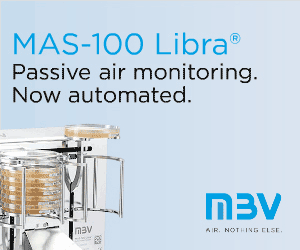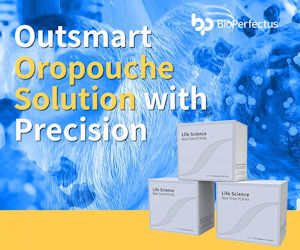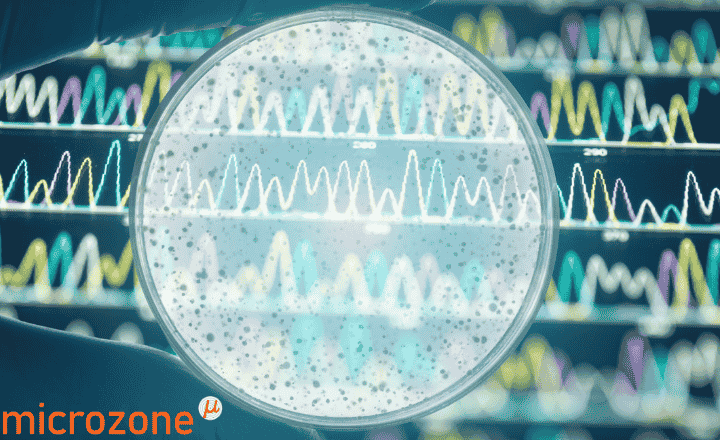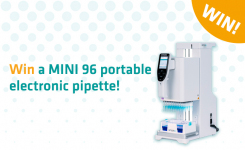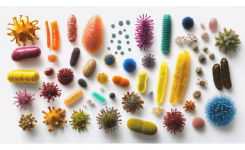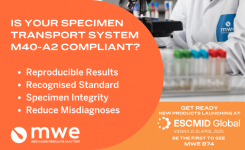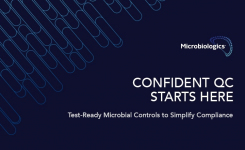Researchers at UNC Health Care have found that using MALDI-TOF based systems for identifying bacteria and fungi in patient specimens led to a 92 percent cost reduction in the reagents needed to run clinical microbiology tests. During the year-long study, the MALDI-TOF MS technology was also found to take much less time. In most cases, lab technologists identified a pathogen in about an hour; test results from conventional molecular methods take at least a day and often longer.
Peter Gilligan, PhD, Director of the Clinical Microbiology-Immunology Laboratories at UNC Hospitals in Chapel Hill, said, “I don’t like to use the word ‘revolutionize,’ but this technology has revolutionized our lab. We can diagnose infection more efficiently and treat patients much quicker, both of which help decrease health care costs.”
Gilligan, a professor of pathology and laboratory medicine in the UNC School of Medicine, and Clinical Microbiology Fellow Anthony Tran, DrPH, presented their findings at the 2014 General Meeting of the American Society for Microbiology in Boston May 18.
From April 1, 2013 to March 31, 2014, Gilligan and Tran led a cost-analysis study. The lab used the MALDI-TOF MS to identify specific microorganisms from 21,930 samples from patients at UNC Hospitals. Specimens consisted of enteric pathogens, enterococci, gram negative non-glucose fermenters, staphylococci, streptococci, and yeast.
Traditionally, clinical microbiologists use various reagents that require different amounts of time to determine what pathogens are contained within a given sample. Often, doctors and patients would need to wait between 24 and 48 hours to get a result from Gilligan’s lab. The cost of identifying 21,930 organisms would have cost $84,491 in reagents alone.
With MALDI-TOF, Gilligan’s team has results often within an hour, depending on the type of organism. And the cost of materials was $6,469 for one year. That’s 92 percent less than the cost of conventional reagents.
The cost savings, when calculated to include time spent by lab technologists, totalled $118,260 for one year. That’s a savings of 82 percent.
Tran said, “We estimate that because of the reduced cost of reagents and time saved for lab technologists, the upfront cost of the MALDI-TOF instrument will be offset in less than three years from purchase.”
MALDI-TOF MS stands for Matrix-Assisted Laser Desorption Ionization-Time of Flight mass spectrometry. It analyzes proteins from incubated specimens and identifies the specimens by comparing them to known microorganisms in a database. The technology came into clinical microbiology use within the past five years. Gilligan’s lab was one of the first in the country to acquire MALDI-TOF MS in 2012 and was the first lab in North Carolina to use it.
Two companies – Bruker Corporation and bioMérieux, Inc. – have developed slightly different versions of the technology. Spearheaded by Melissa Miller, PhD, associate director of the Clinical Microbiology-Immunology Laboratories, Gilligan’s team tested both company’s instruments prior to Tran and Gilligan’s recent study and found that each provided results as good or better than conventional methods. UNC Hospitals purchased the MALDI-TOF MS in 2012 for approximately $250,000 from bioMérieux due in part to the company’s location in north Durham and UNC Health Care’s previous collaborations with the company.
“For a microbiology lab, that’s a lot of money,” Gilligan said. “It was a big commitment, which told us that the hospital had faith we could ultimately save money and most importantly improve patient care.”
Gilligan added, “I can’t stress enough that the savings are really in efficiency. Our lab’s workload is increasing all the time, but we’re not hiring new technologists. So somehow we had to become more efficient and smarter. This technology allows us to do that. Getting results sooner saves everyone time. If a doctor knows sooner what’s going on with a patient, then the doctor can narrow the therapeutic options faster than before.”
The new technology has also helped Gilligan’s lab identify some pathogens that lab technologists would not have typically considered the cause of infection. One of them is the bacterium Corynebacterium kroppenstedtii, which has now been implicated in breast abscesses.
“This is a big deal,” Gilligan said. “Doctors would see patients with chronic infections and no one knew what caused them. Now we know and we can treat patients much more effectively than before.”
This study was conducted entirely by the staff at the Clinical Microbiology Laboratories, which is part of the McLendon Clinical Laboratories at UNC Hospitals in Chapel Hill.


